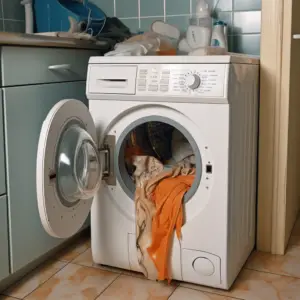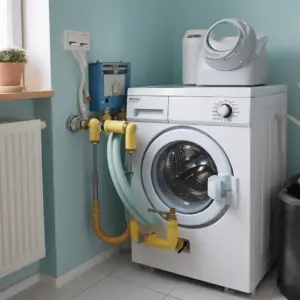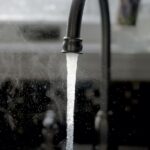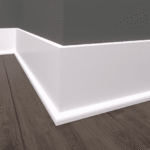Washing Machine Standpipe Overflow, The standpipe is a crucial part of a washer as it drains water out of the appliance. It also controls the quantity of water that enters the washing machine. Any defect in the standpipe, like leakages or clogging, causes a pool at the base of the device, consequently leading to other damages.
A clogged standpipe primarily causes the washing machine overflow issue. Also, an overflow can occur when the drainpipe has a minimal diameter to hold the quantity of water needed. The best way to solve such an issue is to use a drain snake or an enzymatic cleaner to dislodge the drainpipe.
Table of Contents
Washing Machine Standpipe Overflow: How to Resolve the Issue

Let’s discover how best you can resolve this issue (Wash machine overflow), among other tips, without wasting much time.
How Does The Washing Machine Drain System Work?
For a clear grasp of the washing machine overflow problem, it is essential to understand how the washer drains water during a washing cycle.
The machine removes water via the standpipe- a vertical pipe with an elbow underneath that is always filled with water, to stop the backing up of sewer gas into your washing area.
The washer takes out water from the tub when the washing cycle is complete with the help of a pump that in turn forces water into a drain hose that curves up and then out of the unit to join the standpipe, whose location is close to the valves that supply hot and cold water.
With all the washing machine components working efficiently, water will stream via the hose into the faucet to be carried into the main sewer line. Therefore, an overflow can occur if the machine’s drainage systems are defective.
How to Diagnose the Problem with Your Machine’s Standpipe?
If you’re convinced that your machine’s drain system is the problem, you will have to troubleshoot to know the exact part to fix. Begin by running your washing machine via a drain cycle while observing it pump water through the hose and into the faucet. If water streams up and out of the standpipe- the appliance’s drain is probably an issue.
The time that the standpipe takes to fill up and overflow is of the essence as it is a pointer to the location of the clog. Below is the meaning of what the timeframe means:
A few seconds- when the overflow happens within seconds, then the clog is most likely close to the standpipe’s surface or in the hose.
30 Seconds to 1Minute- if the clog causes the water not to come up for 30 seconds or extra, that indicates that the blockage is way down the faucet system.
Exceeding a Minute- if the water lasts more than a minute to overflow after streaming into the drainage pipe, meaning there is a more complex blockage in the plumbing system
Tip: Get ready to turn off the appliance as soon as you spot a leakage.
Ways to Fix a Clogged Standpipe Overflow
To unclog the washing machine, follow these steps:
Step 1: Disconnect the Drain Hose
First, switch off your washer.
Secondly, use a sharp cutting object like scissors, or a utility knife to cut the zip tie that connects the hose.
Pass the hose’s ends via the standpipe moving amid the tub and the drum
Step 2: Use a Garden Hose
The standpipe serves as a central hub for your bathroom’s water flow. It is where the device’s drainpipes and that of the sink meet. Therefore, any slowdown experienced when you switch it on calls for assessment both underneath and above the sink.
If you suspect a block is causing inefficiency, take a garden hose, stick it down in the washer’s faucet, and rotate it to verify that the clog is inside the standpipe, not in the drain pipe.
Step 3: Use an Auger
First, snake down the drainpipe using an auger up where you find resistance. Secondly, turn it against the clog. Do it repeatedly until the clog moves freely, then remove the drill to check whether the clog is attached to it.
If the blockage goes further down than your snake’s end, don’t continue to snake the drain pipe, as it will worsen the problem. As a substitute, use a plunger to remove soap buildup or food items using a chemical drain cleaner to complete the job.
You must note that you can unclog the drains in multiple ways. However, the Drano or Plunger is easy for most people.
Step 4: Flush the Water Down Into Standpipe
If your washer is filled with water and won’t flow into the overflow pipe, resolve it by placing a garden hose into the standpipe while directing the water into it to break down any obstruction that may clog the drainage. Thus the water flow pressure will dislodge the clog out of the faucet.
What Measures Will You Use To Prevent Drain Overflow?
- Use a lint or garment bag to prevent buildup inside the drainpipe.
- Do regular checks on the washer’s filter.
- Ensure proper drainage by allowing at least ½ inch amid the drainpipe and the drain hose to enhance drainage
- Use a suitable detergent to reduce the soap residue buildup
- Do regular cleaning of the washer’s hoses and standpipe.
- If you can afford a HE washer, it is environmentally friendly and saves you from water bills.
- Use a mixture of hot water and baking soda
- Call a plumber to help you fix what
Other ways to unblock the drainpipe
- Use a drain unblocker
- Wash the drain using a high-pressure cleaner
- Pour boiling water and baking soda through the drain
What Causes Washing Machine Drain Overflow?

Improper drainpipe size- the inner diameter should be at least 11/2 inch, and the outer diameter of the drain pipe should be 11/4 inch to allow ventilation.
Missing p-trap – blocks the sewer odors from seeping up through the pipe and assists in seamlessly streaming water via the tube. So, water takes longer when the p-trap is missing, causing a backup.
Kinked discharge hose
Overall, a washing machine standpipe overflow is caused majorly by clogs in the drainpipe, the wrong size in the drainage system, or the drain line being defective. Therefore, it is essential to practice the preventive measures discussed earlier. If your standpipe is clogged, use the steps above to unclog the faucet.


